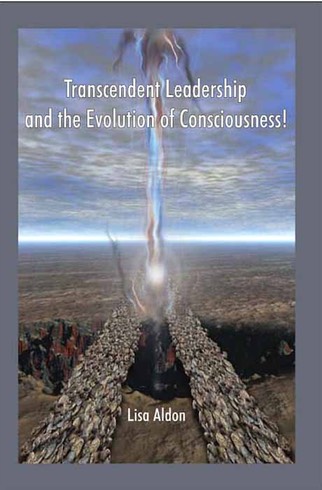Why isn’t there a clear future of work conversation?
Looking at some of the trends futurists are predicting is out of control. If I asked each one of you why are we having such different conversations about the future of work, we would probably hear a lot of different stories. But why? Part of the answer about our future, is looking at our past.
I’m going to take you on a journey through the evolution of our culture and consciousness, and the corresponding evolution of our organizations. This historical perspective will also show us a future full of possibilities in a new emerging consciousness.
But first, Let me take you back to the late 90’s . As an engineer, I had just got promoted into a leadership position in an engineering manufacturing company. I was starting my masters in leadership studies. I needed to understand why the current model of leadership of command control was not working. My research lead me to transpersonal psychologists Ken Wilber and Jenny Wade, among others. They were creating a whole new model which included the entire body of knowledge of the history of humanity up to that point. It was a model of the evolution of consciousness. This model showed not only how we as individuals were evolving, but we as a world culture were evolving.
This started me thinking about organizations and leadership in a whole different way, (and I mean organizations in the broadest sense, not just businesses).
A lot of folks are familiar with our evolution of the ages, from nomadic to agrarian or agriculture, to industrial and to information or postindustrial. But, there is a new emerging integral age, a tipping point, but I’ll talk a little bit more about that in a minute.
As you look at the evolution of culture how does all of this relate to our conversation today about the future of work? If you look at the evolution of the organizational culture that dominated at the different ages, we see that every time we, as a species, have change the way we think about the world, we have come up with powerful organizations tied to our prevailing worldviews.
Researchers have looked at this from every possible angle. They have found that humanity evolves in stages, so too does our organizations in which we work.
You see the different major “themes” in each color, starting with the pre-industrial stage “red”
Red organizations
- Division of labor,
- Power - command authority,
- Highly reactive
Amber Organizations
- Hierarchical,
- command and control (sticks)
- Stable organizational structures
- Employees are untrustworthy
Orange Organizations
- Company as a machine,
- Employees are cogs,
- Competition
Motivate by money and growth THIS WAS MY ORGANIZATION IN THE LATE 90’s.
Green Organizations
- Values-driven Culture
- Inspirational Purpose,
- Empowerment
- Social Responsibility
And the emerging organization
Teal
- Integrity
- Profound commitment to sustainability
- Self-Managed
- Work anywhere
Never before have All of these organizations and cultures existed simultaneously! My guess is someone in the audience works for one of these companies in each color! Could this be the reason for the different conversations of the trends for the future of work that I showed earlier?
The challenge is to recognize that all of these voices are part of the development of our future.
So, If you accept this, this human, organizational and conscious evolution, then as Fredrick Laloux states in his book ReInventing Organizations, “ we hold here something rather extraordinary: the blueprint of the future of organizations, the blueprint to the future of work.”
This next age some are calling Integral, Authentic or as I call it, Transcendent, corresponds to Maslow’s self-actualizing level. Maslow and others agree that the shift from Green to Teal is a particularly momentous one in the human journey, a tipping point.
Through the “integral” lens, people see the world in a broader perspective which increases our capacity for creativity, innovation, being comfortable in the unknown and complex problem solving. Remember what Einstein said, we can’t solve the worlds problems at the same level of consciousness that created them.
Why does this matter? Could it be that organizations that continue to adhere to current states of consciousness will reach a point of non-evolution to failure?
93% of U.S. companies are undergoing significant changes to their core DNA. By doing so, they’re hoping to “meet the needs of customer demands, embrace and leverage disruptive technologies, and remain competitive in the global business landscape.”
Rather than getting immobilized with these disparate conversations about the future of work, or which trend is correct, we realize that we can use this blueprint of our evolution and make the future whatever we want it to be.
So, Hopefully I’ve expanded your horizons on the evolution of consciousness and the future of work.
Our culture is evolving, our organizations and leadership theories are evolving and there is an exciting new model of organizations that we can co-create together.
Shift your perspective, the view is breathtaking.
As Peter Drucker said, “The best way to predict the future is to create it”.
Thanks for reading!
Lisa
